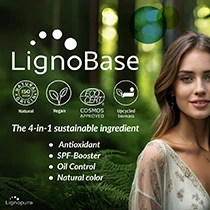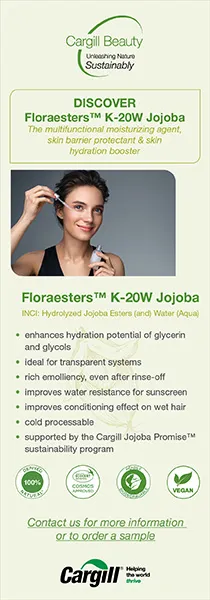Healing henna and pigmented dragon fruit make a splash in cosmetics research

15 Jun 2023 --- New research from Portugal and Morocco reveals that henna (Lawsonia inermis) possesses wound-healing properties and can be used for dermatological, cosmetic and therapeutic applications. Other research from Malaysia shows the uses of dragon fruit peel (Hylocereus polyrhizus) for cosmetics, natural dye and bioplastics applications.
Researchers collected henna from three Moroccan areas – Alnif, Tafraoute Sidi Ali and Tazarine to assess wound healing against silver sulfadiazine-caused burns. The aqueous extract with henna actives was found to possess curative properties when used in an ointment – containing soft paraffin – on Swiss albino mice as an animal laboratory model.
According to the authors, Morocco is recognized for its vegetal biodiversity due to varied climates, from deserts to humid environments. Many medicinal plants result from this terrain, “which nowadays remain insufficiently exploited.”
High antioxidant activity
The study reveals a “statistically significant effect” on healing burns compared to the control group.
Henna has been found to possess rich bioactive molecules such as fatty acids, triglycerides, saponins, tannins, flavonoids and polyphenols, among others. These compounds include a hydroxyl function, allowing them to trap free radicals, giving them significant antioxidant power, according to the authors.
“This may explain the complete healing of the groups treated with L. inermis formulations in a shorter period…Additionally, the abundance of saponins in the extracts of L. inermis leaves could explain the faster healing of burns compared to controls,” they note. Henna’s cosmetic and functional properties remain poorly known and have yet to be commercialized.
Henna’s cosmetic and functional properties remain poorly known and have yet to be commercialized.
Damaged hydrolipidic film on the epidermis (upper skin layer) loses its barrier function and can be an entryway for infection and dehydration. Previous research has found that the protective layer provided by henna is related to its rich lipid content.
The mice, under general anesthesia, were burnt for 20 seconds on shaven backs using a boiled metal bar of 10 mm, heated to a temperature of 100 °C. They were treated once a day with the test creams.
Commercial potential
The researchers highlight that henna is a low cost in traditional medicines and is commonly used as a cosmetic for its red dye. Moroccans have cultural, folkloric, prophetic and religious uses for the plant.
“Active Lawsone ingredients (a red–orange dye (2-hydroxy-1,4-naphthoquinone), also known as hennotannic acid) is used in hair, nail, hand and textile dyeing segments of the cosmetic market for antibacterial, antifungal, antioxidant, analgesic and anti-inflammatory agents,” write the authors.
“Despite all these benefits, L. inermis-based cosmetic sector remains in an incipient stage, and Morocco is one of the richest countries for the potential advantages of Henna on a world scale.”
They add that the plantation of henna plants is limited and has little value as it has yet to be industrialized. Moreover, henna’s cosmetic and functional properties remain poorly known.
Dragon fruit peel for cosmetic use
As consumers look for natural alternatives to synthetics, the researchers highlight the use of dragon fruit in lipsticks.
Oil–wax is used in lip care products for stickiness and dispersing dye, after which it is flavored and packaged. There is a demand for lip care products that have medical benefits and are suitable for the lips. For instance, a lip product can moisturize but also feature emollient actions to inhibit cracking or shield against bacterial infection.
Thus, the authors highlight the interest of scientists in dragon fruits due to their tropical flavor and potential as a natural dye.
Gabriela Chelariu, senior perfumer at Firmenich, previously spoke to us about Firmenich’s flavor of the year – Dragon Fruit Smell-the-Taste. She combined the watery freshness of dragon fruit with the earthy element of beet to drive a sense of naturality and intrigue.
Additionally, she integrated a rich base of magenta vetiver to ground the fragrance in sensuality and depth. This same olfactive theme created an accompanying Live Bold candle fragrance.
The researchers highlight using dragon fruit peel as a raw material for pigments as it contains high levels of phenolic compounds betalain, “presenting attractive and stable colors.” The dragon fruit’s peel accounts for almost 22% of the entire fruit, which gets discarded.
The dragon fruit’s peel accounts for almost 22% of the entire fruit, which gets discarded.
“Cactus fruits contain betalains that exhibit a more comprehensive range of colors, ranging from yellow–orange in Opuntia sp. to red–violet in Hylocereus sp., in contrast to red beetroot,” share the authors.
Upcycling benefits
The authors highlight that every part of the dragon fruit, including the pulp, peel, seed, flower bud and dried flowers, are “excellent” sources of antioxidants, protein, vitamin C and minerals, mainly calcium and phosphorus.
The fruit’s peel accounts for almost 22% of the entire fruit, which gets discarded. The authors highlight the upcycling uses of the peel that contains many pectins, betacyanin pigment and overall dietary fiber.
“The main advantage of producing dragon fruit plants is that they mature and survive for around 20 years after planting. About 800 plants can be accommodated in a hectare,” the authors highlight.
Dragon fruits are native to Mexico, Central America and South America, share the authors. Approximately 20 countries, such as Thailand, Indonesia, Taiwan, Vietnam, Sri Lanka, Bangladesh, Japan, Malaysia, the Philippines, Australia, the US and China, have many growing areas.
Nature-based solutions
Recent research from Poland has found that Tremella fuciformis – also known as snow mushroom – can be used as an alternative to synthetic hyaluronic acid. At the same time, a Thai study found that Durio zibethinus Murray extract from durians can be used in cosmetics.
The Biological Science Research Division of Kao Corporation has revealed that eucalyptus and bilberry extracts can enhance the skin barrier. Meanwhile, researchers have found proof-of-concept for the cosmeceutical application of extracts from the yellow-green microalgae strain Trachydiscus minutus.
Researchers in India and Saudi Arabia found skin care, hair health and medical synergies of Himalayan spiked ginger lily. Also, the synergistic skin care properties of natural extracts based on aloe vera and wild carrot were tested in an herbal ointment.
Furthermore, PhytoGaia created a synergistic complex of natural plant squalene and tocotrienol complex, two key nutricosmetic active ingredients, for oral care and topical skin beauty.
By Venya Patel












